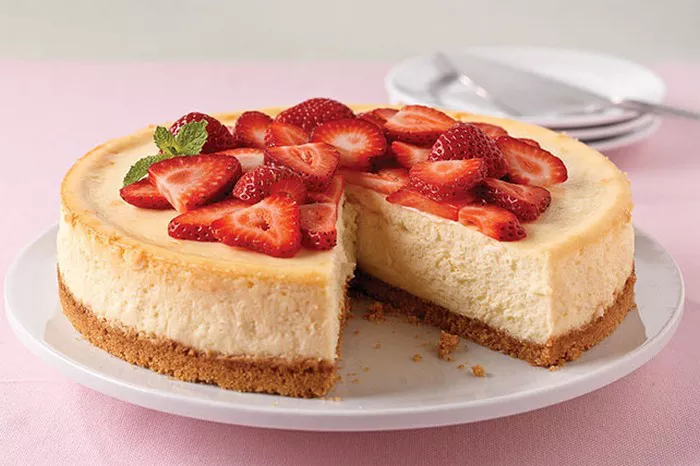Tres Leches cake, often referred to as “three milk cake,” is a beloved and decadent dessert with Latin American origins. This delightful cake is known for its unique texture and rich flavor, making it a favorite among dessert lovers worldwide. But what exactly goes into this luscious treat? In this article, we’ll explore the ingredients that make up Tres Leches cake, the traditional preparation method, and variations on the classic recipe.
The Origins of Tres Leches Cake
Tres Leches cake has its roots in Latin America, with specific origins often attributed to Mexico, Nicaragua, or other Central American countries. The exact history of the cake is a bit murky, with different regions laying claim to its creation. However, its popularity has spread far beyond its place of origin, and today it can be found on dessert menus in many countries and enjoyed by people of diverse cultural backgrounds.
1. The Cake Base
At the heart of Tres Leches cake is a sponge or butter cake. This cake serves as the foundation for the luscious soak of three types of milk that gives the dessert its name.
The sponge cake is typically light and airy, making it ideal for absorbing the milk mixture without becoming overly soggy. It’s essential for the cake to have a sturdy structure to withstand the liquid without falling apart.
2. The Three Milks
The defining characteristic of Tres Leches cake is its unique milk soak made from three types of milk, hence the name “tres leches,” which translates to “three milks” in Spanish.
The three milks used in the soak are:
Evaporated milk: This milk has had about 60% of its water content removed, resulting in a thicker and creamier consistency. It adds richness and creaminess to the soak.
Sweetened condensed milk: This milk has been heated to remove water and add sugar, creating a thick and sweet liquid. It provides the cake with its characteristic sweetness and contributes to the indulgent texture.
Whole milk or heavy cream: This milk serves as the third component of the soak, adding even more richness and moisture to the cake.
The combination of these three milks creates a heavenly liquid that seeps into the sponge cake, infusing it with a sumptuous creaminess.
3. Flavors and Enhancements
While the traditional Tres Leches cake is made with the three milks mentioned above, variations of the recipe may incorporate additional flavorings or enhancements to suit different tastes. Some common flavorings and enhancements include:
Vanilla extract: Vanilla is a classic flavor that complements the richness of the milk soak and adds a warm, comforting aroma.
Rum or other liqueurs: Some recipes call for the addition of rum or other liqueurs to add a subtle boozy flavor to the cake. The alcohol also contributes to the preservation of the cake.
Orange or lemon zest: The addition of citrus zest can brighten the flavors of the cake and provide a refreshing twist.
Cinnamon: Cinnamon is a popular spice used in some variations of Tres Leches cake, adding a warm and aromatic element to the dessert.
Fruit toppings: While the soaked cake is already incredibly flavorful, some recipes top the cake with fresh fruit such as strawberries, peaches, or mangoes, adding a burst of color and juiciness to each slice.
4. Whipped Cream Topping
After the cake has been soaked with the milk mixture, it is often adorned with a generous layer of whipped cream. The whipped cream topping adds a light and fluffy contrast to the dense and creamy soaked cake. It also provides a blank canvas for additional garnishes such as fruit, chocolate shavings, or cinnamon dusting.
The whipped cream can be sweetened or left with a touch of natural sweetness, depending on personal preference. Some recipes also include a bit of vanilla extract in the whipped cream to enhance its flavor.
Traditional Preparation
The process of making Tres Leches cake is relatively straightforward, but the result is a dessert that delights the senses. Here’s a step-by-step guide to the traditional preparation:
1. Baking the Cake
The first step is to bake the sponge cake. The cake is typically made with flour, sugar, eggs, and butter, resulting in a light and fluffy texture. The cake is baked in a rectangular or square pan to facilitate soaking and serving.
2. Pricking the Cake
Once the cake has cooled slightly but is still warm, it’s time to prepare it for the milk soak. The cake’s surface is pricked all over using a fork or toothpick. These tiny holes allow the milk mixture to penetrate the cake fully.
3. Preparing the Milk Soak
The three milks (evaporated milk, sweetened condensed milk, and whole milk or heavy cream) are combined in a bowl, along with any desired flavorings or enhancements like vanilla extract or rum. The mixture is thoroughly whisked to ensure the ingredients are well combined.
4. Soaking the Cake
The milk mixture is poured over the pricked cake slowly and evenly. As the cake soaks, it begins to absorb the creamy liquid, transforming into a moist and tender delight.
5. Chilling the Cake
After the cake has been soaked, it’s time to let it chill and set in the refrigerator. Chilling the cake for several hours or overnight allows the flavors to meld and the milk soak to fully infuse the cake.
6. Whipping the Cream
Before serving, the whipped cream topping is prepared. Heavy cream is whipped until it reaches stiff peaks, providing a velvety and pillowy texture.
7. Decorating the Cake
The chilled and soaked cake is then adorned with the whipped cream topping, spread evenly over the surface. Depending on preference, additional garnishes such as fresh fruit or chocolate shavings may be added.
Variations on Tres Leches Cake
While the traditional Tres Leches cake is a beloved classic, there are numerous variations that cater to different tastes and dietary preferences. Some popular variations include:
Chocolate Tres Leches Cake: For chocolate lovers, cocoa powder can be added to the cake batter to create a rich and decadent chocolate version of Tres Leches cake.
Fruit-Infused Tres Leches Cake: Fresh fruits such as strawberries, mangoes, or peaches can be added to the milk soak or used as toppings, infusing the cake with additional natural sweetness and fruity flavors.
Coffee Tres Leches Cake: Coffee or espresso can be incorporated into the milk soak, creating a delightful mocha flavor that pairs well with the creamy sweetness of the cake.
Vegan Tres Leches Cake: For those following a vegan diet, plant-based milk alternatives and vegan whipped cream can be used to create a dairy-free version of Tres Leches cake.
Gluten-Free Tres Leches Cake: Gluten-free flours, such as almond flour or a gluten-free baking blend, can be used to make the sponge cake, accommodating those with gluten sensitivities or celiac disease.
Conclusion
Tres Leches cake is a delightful and indulgent dessert that captures the hearts and palates of dessert enthusiasts worldwide. With its sponge cake base soaked in a creamy blend of three milks and topped with fluffy whipped cream, it’s a treat that promises an unforgettable experience with every bite.
Whether you choose to savor the traditional version or explore the diverse array of variations, Tres Leches cake is a testament to the rich culinary heritage and creativity of Latin American cuisine. From its humble beginnings to its status as a beloved dessert, Tres Leches cake continues to delight and bring joy to countless gatherings and celebrations across the globe.



























